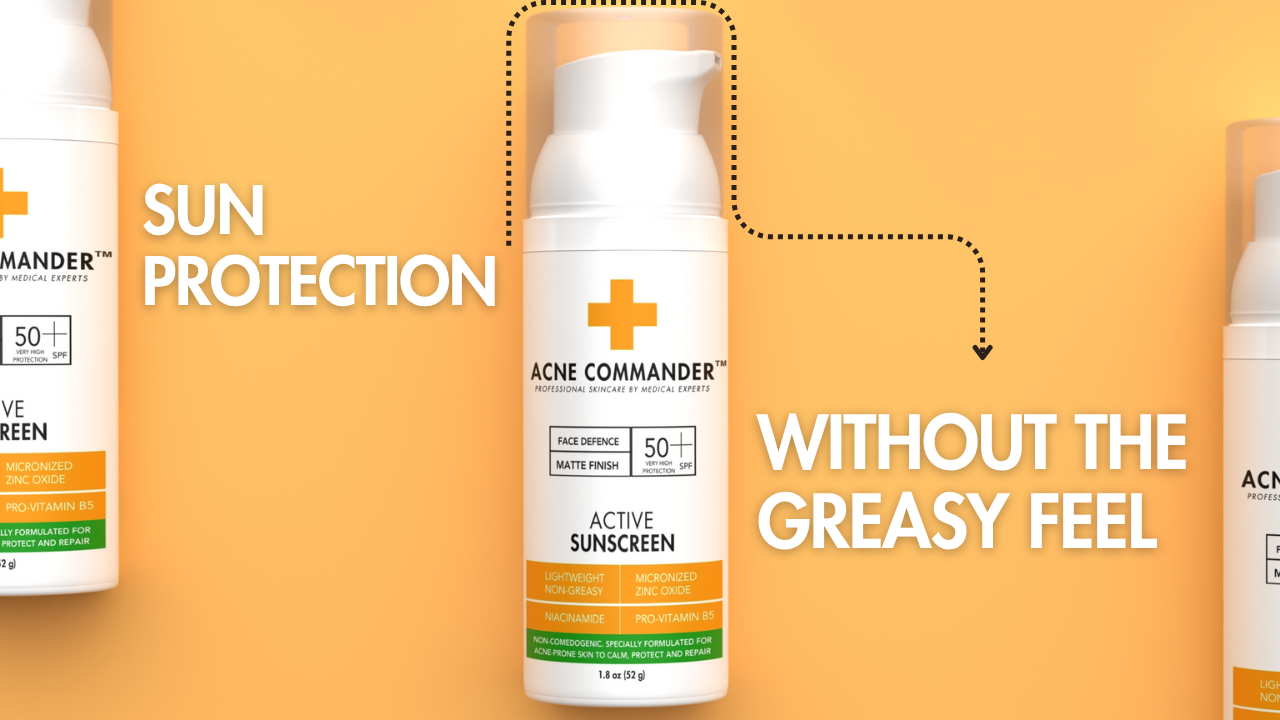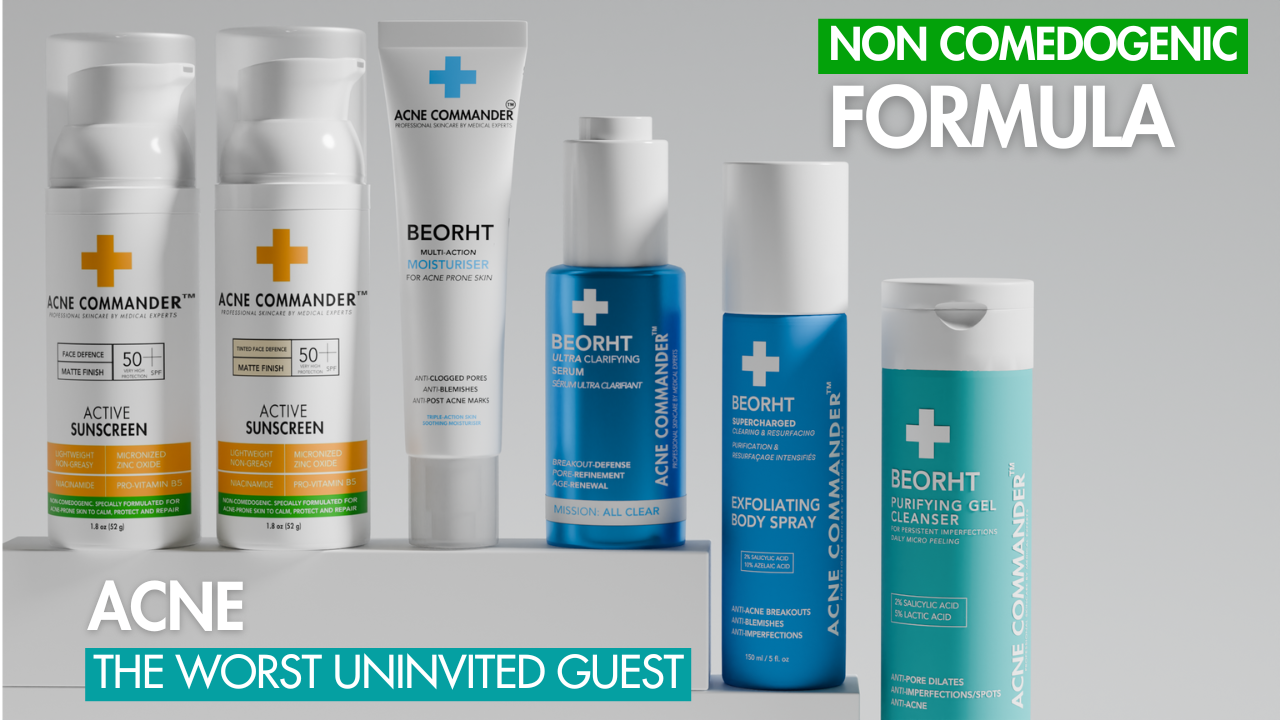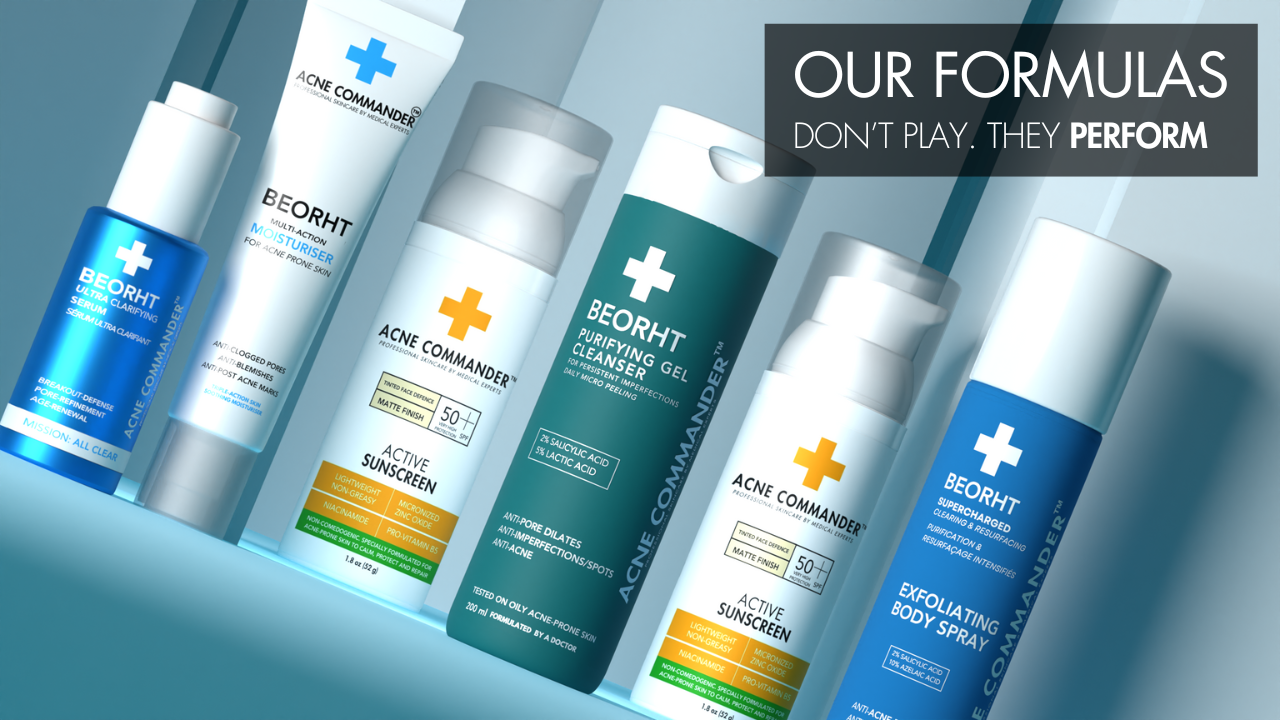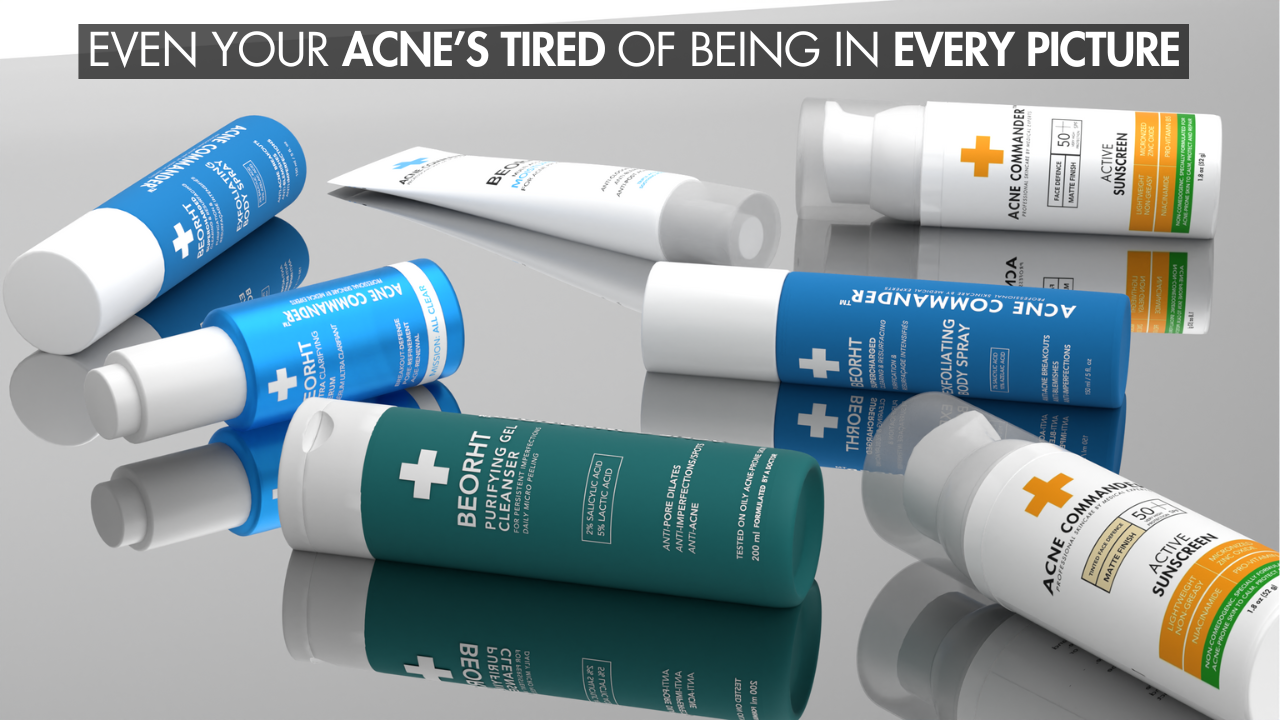Introduction: Control Your Skincare, Starting in Your Kitchen
If you’ve ever read the ingredient list on a skincare product and thought, “What are all these chemicals doing on my face?”, you’re not alone. Many acne sufferers turn to DIY skincare in search of simplicity, affordability, and ingredient transparency. And at the top of that list? Moisturizers.
But acne-prone skin is not like other skin types. It’s more reactive, sensitive, and easily clogged, meaning making your own moisturizer at home requires more care than just mixing coconut oil and aloe vera in a jar.
In this comprehensive guide, you’ll learn:
-
How to make moisturizer at home for acne-prone skin
-
Which ingredients are safe, effective, and non-comedogenic
-
What tools and hygiene practices are essential
-
Why many people still turn to professionally-formulated options like Acne Commander 3-in-1 Repairing Moisturiser for results that DIY can’t always deliver
Let’s start with the science behind what acne-prone skin truly needs.
Why Acne-Prone Skin Still Needs Moisturizer
One of the biggest myths in skincare is that people with acne shouldn’t moisturize. In fact, skipping moisturization makes acne worse.
Here’s what actually happens:
-
Your skin loses water → triggers more oil production
-
Dry, irritated skin can’t protect itself → leads to inflammation
-
Harsh acne products strip the skin → barrier becomes damaged
-
Bacteria spread more easily → more breakouts
A good moisturizer will hydrate, calm, and protect acne-prone skin, without clogging pores.
Key Qualities of an Acne-Safe Moisturizer
When formulating your own product, your moisturizer must be:
-
Non-comedogenic (won’t clog pores)
-
Oil-free or oil-balanced
-
Rich in humectants (to hydrate)
-
Anti-inflammatory
-
Fragrance-free
-
Bacteria-resistant (or used quickly if homemade)
The 3 Parts of a Moisturizer You Must Include
1. Humectants (Pull water into the skin)
-
Glycerin
-
Aloe Vera Gel
-
Honey (Manuka preferred)
2. Emollients (Smooth skin by filling in gaps)
-
Jojoba Oil – Mimics sebum, low clog risk
-
Rosehip Seed Oil – Brightens and repairs
-
Squalane – Light, non-greasy
3. Occlusives (Seal in hydration, use lightly)
-
Beeswax / Candelilla Wax – Best for night balms
-
Refined Shea Butter – Use with caution
Ingredients to Avoid for Acne-Prone Skin
|
Ingredient |
Reason to Avoid |
|
Coconut Oil |
High clogging risk |
|
Olive Oil |
Moderate comedogenicity |
|
Essential Oils |
Can irritate, inflammation |
|
Fragrance |
Can trigger breakouts and redness |
|
Raw dairy |
Bacterial contamination risk |
|
Unrefined Shea Butter |
Too heavy for most facial use |
Equipment You’ll Need
-
Sterilized glass mixing bowl
-
Whisk or mini blender
-
Airtight dark glass jar
-
Clean spatula (never fingers)
-
Refrigerator (for storage)
Hygiene is critical when making skincare at home. Even clean-looking tools can carry bacteria that cause acne.
Step-by-Step Recipes: Moisturizers You Can Make at Home
Recipe 1: Lightweight Aloe + Jojoba Gel
Best For: Oily, sensitive, acne-prone skin
Ingredients:
-
2 tbsp pure aloe vera gel
-
1 tsp jojoba oil
-
1/2 tsp vegetable glycerin
-
Optional: 1 drop green tea extract
Instructions:
-
Mix all ingredients in a sterilized glass bowl.
-
Whisk until smooth and uniform.
-
Store in an airtight jar in the fridge.
-
Use within 5–7 days.
Benefits:
-
Hydrates without heaviness
-
Calms inflammation
-
Reduces surface oil
Recipe 2: Healing Honey + Rosehip Night Cream
Best For: Acne with post-inflammatory hyperpigmentation
Ingredients:
-
1 tsp rosehip seed oil
-
1 tsp Manuka honey
-
1 tsp aloe vera gel
-
1 vitamin E capsule
Instructions:
-
Mix everything slowly (heat honey slightly if too thick).
-
Blend thoroughly.
-
Store airtight in fridge; use at night only.
Benefits:
-
Fades dark marks
-
Heals damaged skin
-
Gentle and anti-inflammatory
Recipe 3: Squalane-Calm Barrier Cream
Best For: Dehydrated + acne-prone skin
Ingredients:
-
1 tbsp squalane oil
-
1 tsp calendula-infused oil (or calendula extract)
-
1 tsp aloe vera gel
-
1/2 tsp glycerin
Instructions:
-
Mix oils first.
-
Add aloe and glycerin.
-
Stir until fully emulsified.
-
Store in a sterilized jar.
Use: Morning or evening.
Shelf Life and Storage
-
Always store in the fridge
-
Use within 5–10 days
-
Do not use if the color, smell, or texture changes
-
Never dip fingers into the jar; use a spatula
Homemade moisturizers lack preservatives. If bacteria get in, it can irritate or infect acne-prone skin.
What About Preservatives?
Unless you’re a trained formulator with pH meters, emulsifiers, and preservatives, it’s best to keep your DIY moisturizer simple and short-lived. Never add water unless you know how to preserve it safely.
Common Mistakes in DIY Moisturizers for Acne
❌ Using comedogenic oils (coconut, cocoa butter, etc.)
❌ Adding essential oils “for scent”
❌ Keeping products too long
❌ Using dirty tools or unwashed hands
❌ Assuming “natural” means “safe”, poison ivy is natural too!
When DIY Isn’t Enough: Why Clinical Moisturizers Like Acne Commander Work Better
While DIY moisturizers are great for basic hydration and calming, they lack:
-
Stable concentrations of active ingredients
-
Exfoliating agents like salicylic acid
-
Sebum regulators like zinc PCA
-
Microbiome support (e.g., probiotic ferments)
-
Preserved stability and consistent pH
That’s where Acne Commander 3-in-1 Repairing Moisturiser comes in.
Why Acne Commander Is Better Than Homemade Moisturizers
|
Feature |
Acne Commander |
Homemade DIY |
|
Non comedogenic |
✅ |
❌ Not guaranteed |
|
Acne treatment actives |
✅ (Salicylic Acid, Zinc PCA) |
❌ |
|
Microbiome support |
✅ (Vitreoscilla Ferment) |
❌ |
|
Barrier repair |
✅ (2-Oleamido-1,3-Octadecanediol) |
❌ |
|
Clinical testing |
✅ |
❌ |
|
Preserved & stable |
✅ |
❌ |
Acne Commander gives you hydration + treatment + repair in one product, something most DIY moisturizers can’t deliver consistently.
Transitioning from DIY to Acne Commander
If you’ve tried making moisturizer at home and haven’t seen enough improvement:
-
Stop DIY for 3 days to reset your skin
-
Patch test Acne Commander
-
Use once daily for 3 days, then switch to twice daily
Expect to see:
-
Oil control within 5–7 days
-
Fewer breakouts by week 2
-
Smoother, less red skin by week 3
FAQs: Making Moisturizer at Home for Acne-Prone Skin
❓ Is it safe to make moisturizer at home?
Yes, if you use acne-safe ingredients, sterilized tools, and store it properly.
❓ Can I use coconut oil in a DIY moisturizer?
No. It’s highly comedogenic and likely to clog pores.
❓ What oils are best for acne-prone skin?
Jojoba, squalane, and rosehip seed oil are safe.
❓ How long can I store a homemade moisturizer?
5–10 days in the refrigerator. No preservatives = short life.
❓ Can DIY moisturizers clear acne?
They can support healing, but they don’t contain exfoliating or antibacterial actives like salicylic acid or zinc PCA.
Conclusion: Homemade Can Help, But Science Wins for Results
Learning how to make a moisturizer at home for acne-prone skin puts the power back in your hands, but it also requires knowledge, caution, and consistency. Hydrating your skin the right way can help reduce breakouts, control oil, and restore calm to irritated skin.
However, DIY methods often fall short when it comes to acne-fighting actives, microbiome health, and barrier repair.
That’s why products like Acne Commander 3-in-1 Repairing Moisturiser were created, to give you the hydration of aloe and glycerin, the acne-fighting power of salicylic acid and zinc PCA, and the healing strength of barrier-repairing lipids, in one formula.
Make it simple. Make it safe. Make it work.





